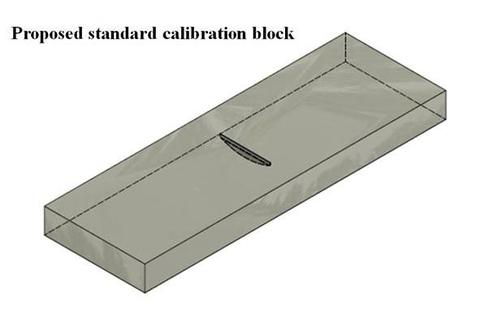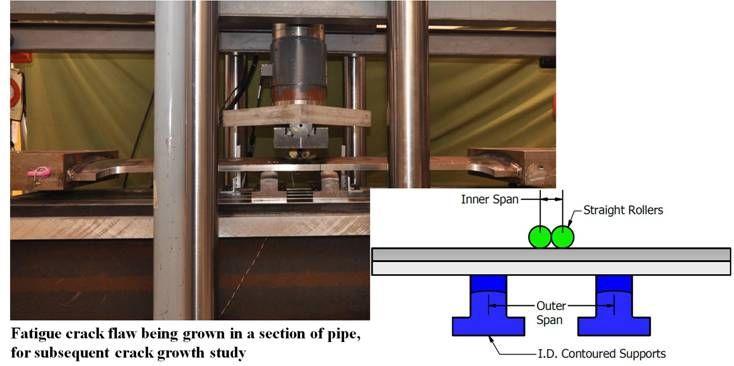Method for Fatigue Pre-cracking of Pipeline Test Samples
NIST scientists Mark Richards, Dash Weeks and David McColskey have developed a method of producing representative surface flaws in large sections of pipeline steels, providing a critical tool for predicting pipeline reliability. Flaws (i.e., cracks) occur in pipelines during manufacture, deployment and operation and can lead to pipeline failure. Understanding crack propagation during normal and extreme service conditions is important to the design and safe operation of pipelines. Pipeline engineers are beginning to

Flaw preparation begins with the introduction of a starter notch using electrical discharge machining (EDM). The notched specimen is then installed into a servo-hydraulic mechanical test frame and cyclically loaded in 4-point bending to grow a fatigue crack from the starter notch. Careful measurement of the displacement of the notch opening as a function of the number of load cycles, coupled with an innovative calibration routine, permits accurate prediction of the flaw size prior to further testing, and the shape of the starter notch correlates with the final shape of the flaw. This characterization ensures reproducible flaw generation.
The method is currently being used to introduce fatigue cracks into medium-scale (gage length of ~ 1 m) curved wide plate samples from actual pipeline material as part of a collaborative research program with the Department of Transportation aimed at understanding the influence of weld parameters and temperature on crack growth in pipeline steels.
Contact: mark.richards [at] nist.gov (Mark Richards) (MML-Boulder, 303-497-4866)


